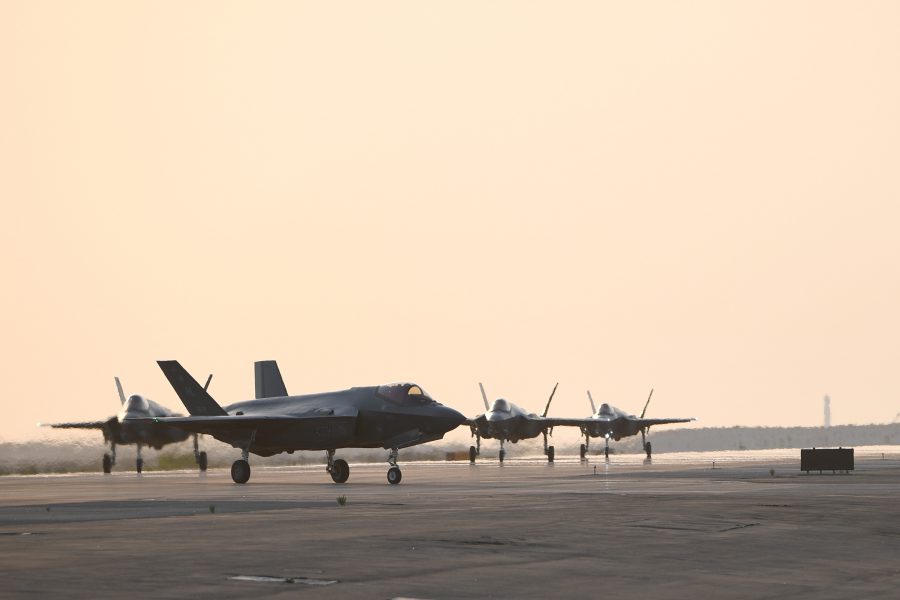UAE Forces U.S. to Withdraw Vital Fighter Jets, Combat Assets from Gulf State
According to The Wall Street Journal, senior UAE officials notified the U.S. in February that its assets at Al Dhafra Air Base were prohibited from launching attacks on targets in Iraq, Yemen, or any other location in the region.
(DEFENCE SECURITY ASIA) — The United States has been compelled to relocate its fighter jets, drones, and other military aircraft en masse from the United Arab Emirates (UAE) after being informed that its bases there could not be used for strikes in the Middle East.
According to The Wall Street Journal, senior UAE officials notified the U.S. in February that its assets at Al Dhafra Air Base were prohibited from launching attacks on targets in Iraq, Yemen, or any other location in the region.
The restriction, based on efforts to preserve security, specifically bars missions targeting Iraq and Yemen.
“Restrictions have been imposed (on the United States) regarding strike missions against targets in Iraq and Yemen. These restrictions are based on efforts to preserve security,” according to a senior UAE official quoted by The Wall Street Journal
Al Dhafra Air Base, one of the largest U.S. bases in the Middle East and located just 20 miles south of Abu Dhabi, has been a pivotal military hub.

The UAE’s directive has prompted the U.S. to significantly transfer its aircraft and other military assets from Al Dhafra to Al Udeid Air Base in Qatar, the largest American air base in the Middle East housing over 10,000 U.S. military personnel.
UAE officials expressed concerns to the U.S. that continued air strikes from Al Dhafra could make the UAE a target of the “Axis of Resistance.”
This could potentially lead to retaliatory actions by nearby Iran if attacks were launched against Tehran from the base.
On 24 January 2022, Al Dhafra Air Base was targeted by Houthi Zulfiqar ballistic missiles in retaliation for UAE involvement in the ongoing Yemeni Civil War.
Two missiles aimed at the base were intercepted and destroyed by US Patriot missiles, coincident to efforts by the United Arab Emirates Armed Forces.


The WSJ report underscores the tension among Gulf Arab states that host U.S. military bases but at the same time, feared of being drawn into conflicts between Palestine and Israel.
In March, Qatar and Kuwait also instructed the U.S. that their air bases should not be used for airstrikes against Iran, reflecting a broader regional reluctance to engage militarily with Tehran.
Both nations stressed their neutral stance and desire to avoid conflict in the region.
The U.S. also stations aircraft at Ali Al Salem Air Base and Ahmed Al Jaber Air Base in Kuwait, with Al Udeid Air Base in Qatar serving as a major operational site.
This restriction follows decisions by several Arab countries to limit permissions granted to U.S. and allied fighter jets to conduct airstrikes against Iranian proxy groups from their bases.
Similarly, Saudi Arabia has reportedly declined to allow its airspace to be used for attacks on the Houthi armed group in Yemen, a move confirmed by the Pentagon amidst broader Arab limitations on military operations against Iranian proxies. — DSA



Comments are closed.